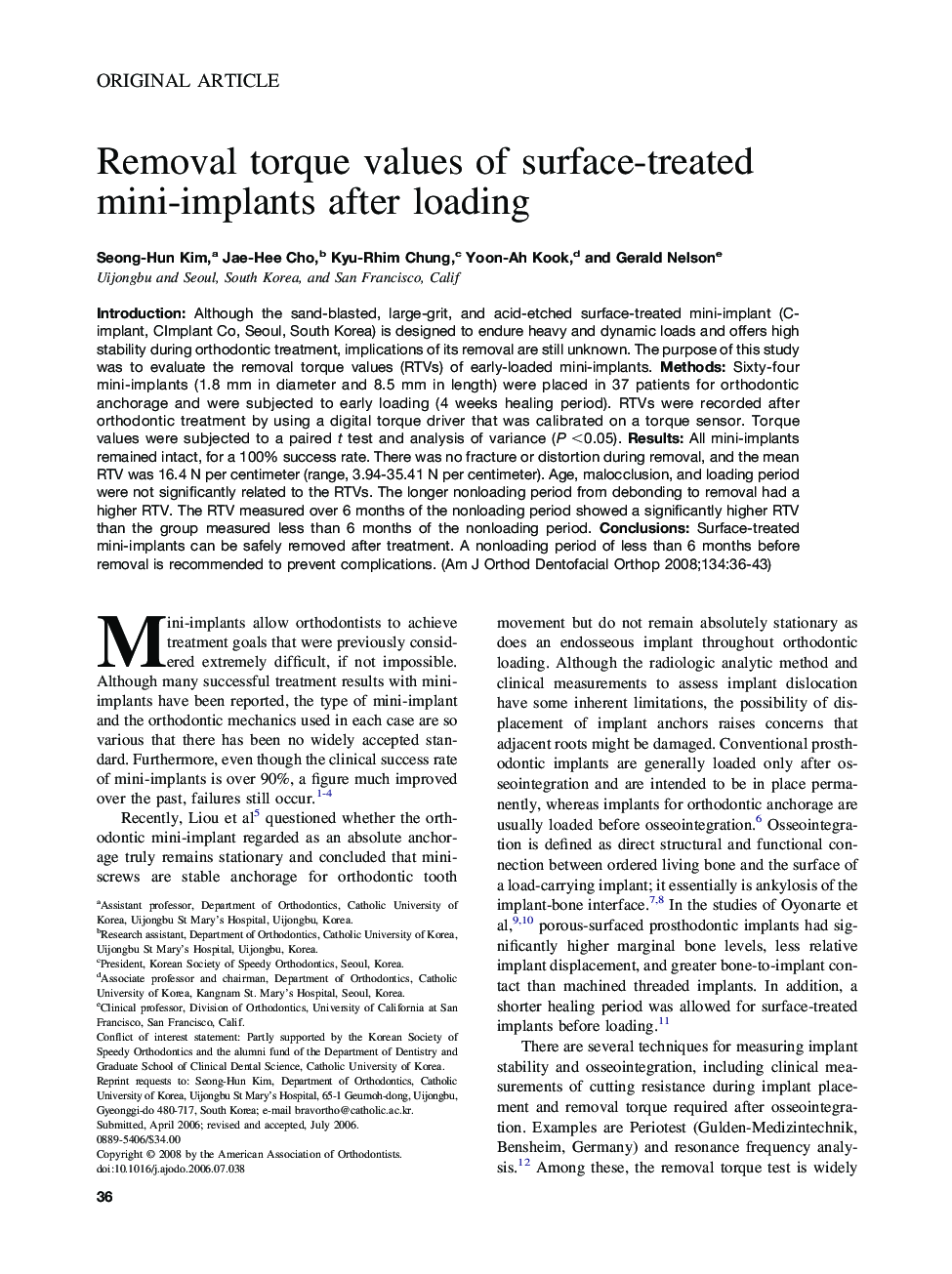| Article ID | Journal | Published Year | Pages | File Type |
|---|---|---|---|---|
| 3118884 | American Journal of Orthodontics and Dentofacial Orthopedics | 2008 | 8 Pages |
Introduction: Although the sand-blasted, large-grit, and acid-etched surface-treated mini-implant (C-implant, CImplant Co, Seoul, South Korea) is designed to endure heavy and dynamic loads and offers high stability during orthodontic treatment, implications of its removal are still unknown. The purpose of this study was to evaluate the removal torque values (RTVs) of early-loaded mini-implants. Methods: Sixty-four mini-implants (1.8 mm in diameter and 8.5 mm in length) were placed in 37 patients for orthodontic anchorage and were subjected to early loading (4 weeks healing period). RTVs were recorded after orthodontic treatment by using a digital torque driver that was calibrated on a torque sensor. Torque values were subjected to a paired t test and analysis of variance (P <0.05). Results: All mini-implants remained intact, for a 100% success rate. There was no fracture or distortion during removal, and the mean RTV was 16.4 N per centimeter (range, 3.94-35.41 N per centimeter). Age, malocclusion, and loading period were not significantly related to the RTVs. The longer nonloading period from debonding to removal had a higher RTV. The RTV measured over 6 months of the nonloading period showed a significantly higher RTV than the group measured less than 6 months of the nonloading period. Conclusions: Surface-treated mini-implants can be safely removed after treatment. A nonloading period of less than 6 months before removal is recommended to prevent complications.
